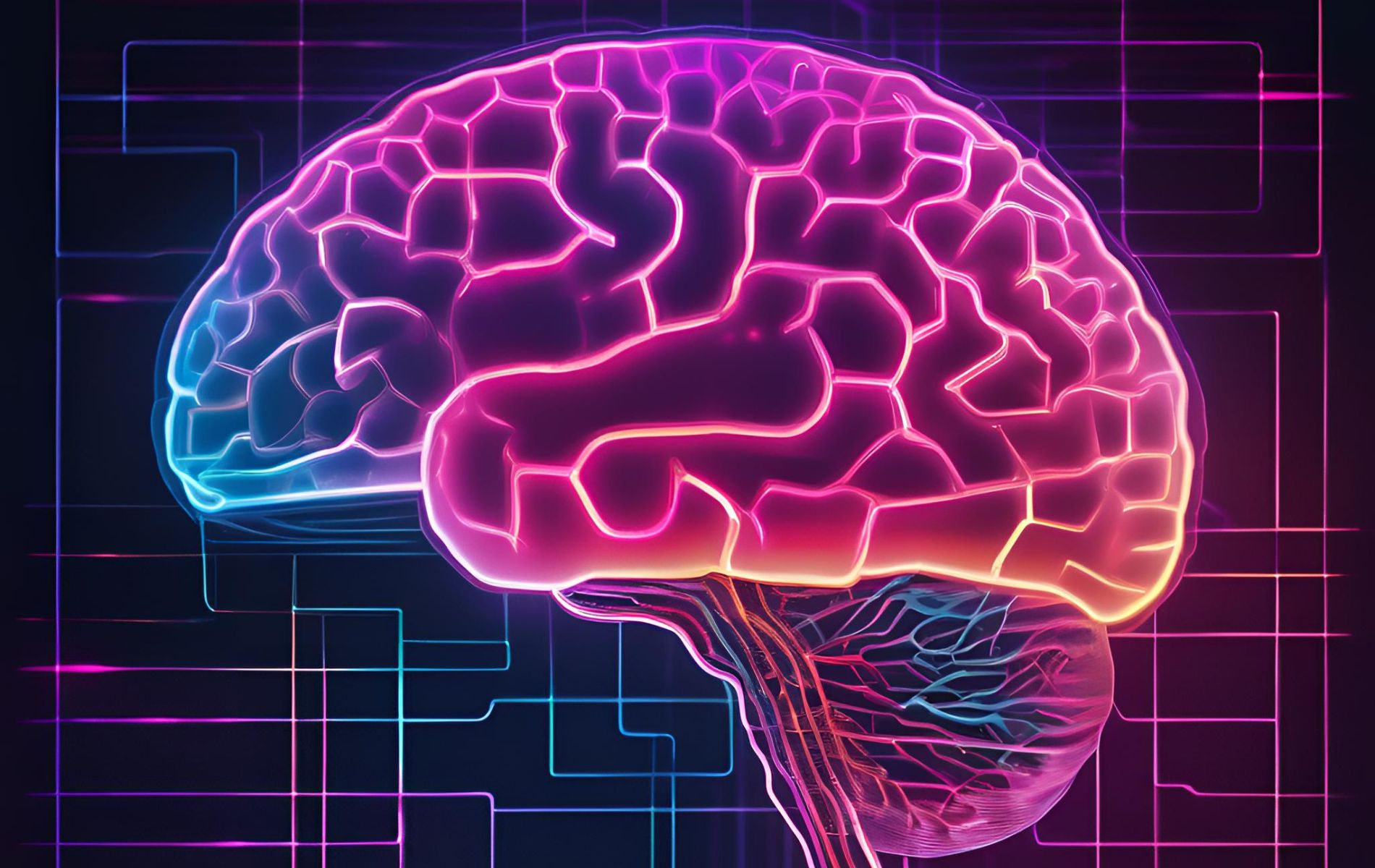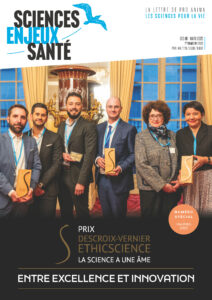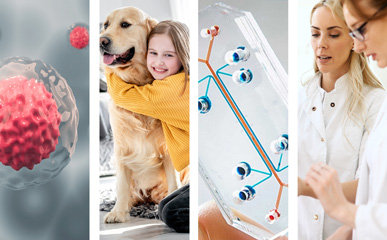
OoC standardization roadmap, A new area for human neuroscience, NURA : A training portal for NAMs, and more
News on non-animal methods
NEWS, REPORTS & POSITION STATEMENTS
1. Launch of an international Organ-on-Chip Standardization Roadmap at EUROoCS 2024
On the first day of the conference of the European Organ-on-Chip Society (EUROoCS) from July 3 – 5 2024 in Milan, the international Organ-on-Chip Standardization Roadmap was officially launched. Andries van der Meer (UTwente and hDMT, The Netherlands), chair of the Focus Group Organ-on-Chip (FG OoC) and also chair of EUROoCS presented the roadmap for the more than 600 participants worldwide in the Aula Magna of Politecnico di Milano.
After 2 years of hard work by 120 European experts, 10 focus group meetings, 90 working group (WG) meetings, and 3 revisions, the final version of the roadmap for Organ-on-Chip standardization is ready. If you are a stakeholder in this field and would like to be involved in the development of possible standards, you can become a member of the expert group.
2. The EU passes the AI Act and its implications for digital medicine are unclear
On 13 March 2024, the much-anticipated AI Act was passed by the EU parliament and will soon be adopted as EU law. It will apply new requirements for developers and deployers of AI-enabled digital health tools (DHTs), including for a defined class of high-risk AI systems and for general-purpose AI.
In an article published in Nature Digital Medicine, scientist S.Gilbert highlights the fact that although the text of the law is available, complete in all but there are future steps in the legislative process that can clarify ambiguity, including standards, guidelines, and implementing laws, and the author remains optimistic the EU will get the implementation right.
Read more in Nature Digital Medicine
3. Human neuroscience is entering a new era — it mustn’t forget its human dimension
The prestigious scientific journal Nature recently published an editorial on one of its new issues including several studies devoted to human neuroscience : “The field is taking a leap forward thanks to innovative technologies, such as artificial intelligence. Researchers must improve consent procedures and public involvement”.
4. The pivotal role of recombinant antibody technology in advancing biopharma : Past achievements and future prospects
Recombinant antibody technology has been leveraged to mitigate apparent ethical issues with the hybridoma technology that suffers from problems around antibody heterogeneity, batch-to-batch variability, loss of antibody productivity, and limitations in terms of cost and scale.
Recombinant antibodies are generated from host cell lines through recombinant DNA technology. A key benefit of recombinant antibody technology is its potential for exploring and characterizing many types of mAbs (Monoclonal antibodies), a potential only limited by the imagination. Major advances are expected in the near future, with developments in the field that will revolutionize the recombinant antibody sector and result in antibody therapies becoming available for unknown targets.
TOOLS, PLATFORMS, CALLS
5. Scientific Committee guidance on integrating epidemiological studies for use in EFSA’s scientific assessments
EFSA requested its Scientific Committee to prepare a guidance document on appraising and integrating evidence from epidemiological studies for use in EFSA’s scientific assessments. The guidance document provides an introduction to epidemiological studies and illustrates the typical biases, which may be present in different epidemiological study designs.
With respect to risk characterisation, the guidance considers how evidence from human epidemiological studies can be used in dose – response modelling with several different options being presented. Finally, the guidance addresses the application of uncertainty factors in risk characterisation when using evidence from human epidemiological studies.
6. EU-60 : Developing in vitro methods and approaches for scientific and regulatory use
The French center for the 3R is proposing a module that provides guidance to in vitro test method developers and others interested in ensuring the quality of new methods or approaches and in improving the efficiency with which these are developed, tested, optimised and approved by regulatory bodies.
This is a continuous and online training for researchers, PhD students, led by the ETPLAS Education and Training Platform for Laboratory Animal Science.
7. NURA : A training portal for New Approach Methodology (NAM) use for regulatory applications
New Approach Methodology (NAM) Use for Regulatory Application (NURA) is a continuing education program designed to provide professionals in the field of toxicology with specialized resources and basic hands-on training in non-animal new approach methodologies.
NURA offers trainings, seminars, and other events to encourage the use of non-animal approaches within various regulatory frameworks. In 2018, NURA kicked off its inaugural event with a training geared toward non-animal NAMs use under the Toxic Substances Control Act (TSCA). TSCA includes historic provisions to replace and reduce the use of animals in chemical testing.
INDUSTRY, BIOTECH & PARTNERSHIPS
8. MIMETAS Contributes with Human Organ-on-Chip Data to IND Application by argenx
MIMETAS, a global leader in organ-on-chip-based disease models for drug discovery and development, announces an Investigational New Drug (IND) filing by argenx.The preclinical collaboration focused on investigating the effects of a novel candidate in a human in vitro disease assay in MIMETAS’ OrganoPlate platform.
The research seamlessly aligns with the goals set forth by the 2022 FDA Modernization Act 2.0, emphasizing the use of in vitro models to investigate the safety and effectiveness of drugs.
SCIENTIFIC DISCOVERIES & PROTOCOLS
9. New transparent ‘blood vessel-on-a-chip’ could reduce animal testing
Responsible for over 18 million deaths annually, cardiovascular disease is the leading cause of mortality globally and a major public health concern.The University of Sydney team successfully created a transparent microchip with the potential to reduce the testing of new drugs to treat heart disease on animals before proceeding to clinical trials.
“If we use an animal model, we are unable to see changes at this level of detail in a living organism because you can’t see through the vessels.” says Associate Professor Anna Waterhouse from the Charles Perkins Center and the Sydney Nano Institute.
Read the publication in Advanced Materials Technologies
10. 3‑Dimensional printed model of the temporal bone for neurosurgical training
The development of neurosurgical skills stands out as a paramount objective for neurosurgery residents during their formative years. Mastery of intricate and complex procedures is a time-intensive process marked by a gradually ascending learning curve.
An open-source 3‑dimensional (3D) model of the temporal bone, created for educational purposes, should be easily and economically reproducible using a 3D printer, offering all residents the opportunity to understand the spatial location, three-dimensional anatomical structures, and fundamental intricacies of mastoidectomy in a more ethical way than through non-living animal models.
11. Important step forward in stem cell therapy for rare bowel disease
A new study led by researchers at UCL and the University of Sheffield, involved taking tissue samples of colon donated by GOSH patients (Great Ormond Street Hospital for Children) with Hirschsprung disease as a part of their routine treatment which were then transplanted with stem cell-derived nerve cell precursors that developed into the crucial nerve cells within the gut tissue.
The results of this study demonstrate for the first time the potential of stem cell therapy to improve the functionality of the intestine in those with Hirschsprung disease which, in turn, could lead to improved symptoms and better outcomes for individuals with the disease.
12. Preserving breast tissue outside of body will aid cancer research
A new study, funded by the Prevent Breast Cancer charity, found breast tissue could be preserved in a special gel solution, enabling scientists to examine the ability to respond to a series of drugs in the same way as normal breast tissue.
Lester Barr, consultant breast surgeon and founder of Prevent Breast Cancer, say : “It’s a hugely exciting development in animal-free research which puts us in a really strong place to find new drugs to prevent breast cancer”


